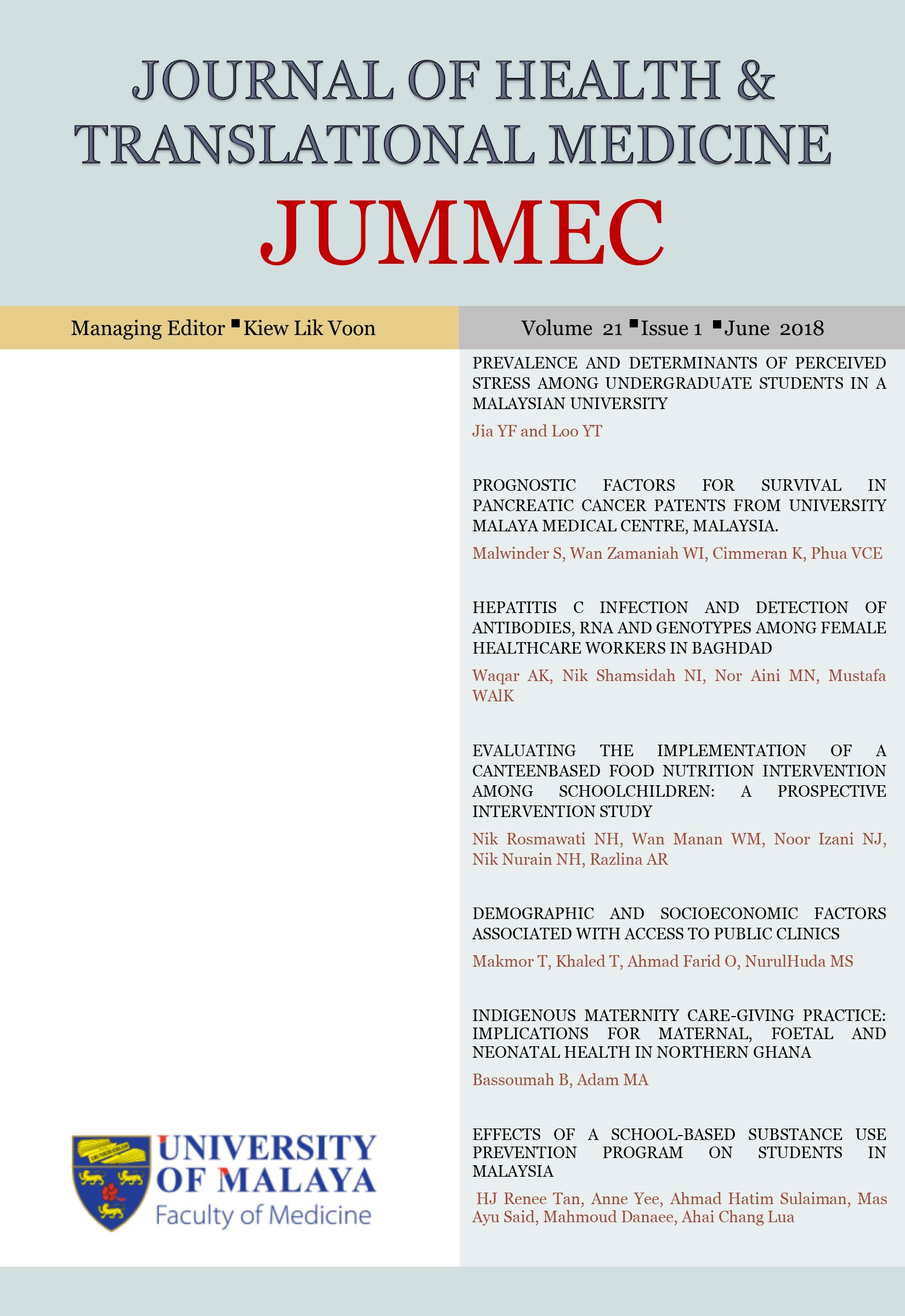HEPATITIS C INFECTION AND DETECTION OF ANTIBODIES, RNA AND GENOTYPES AMONG FEMALE HEALTHCARE WORKERS IN BAGHDAD
Keywords:
Healthcare Worker, Hepatitis C Virus, Hcv-Genotype, Nosocomial Infection, Ribonucleic Acid, Risk FactorAbstract
Background: Hepatitis C Virus (HCV) is a major public health problem worldwide. About 130- 200 million people are infected with HCV worldwide leading to 500,000 deaths annually (WHO 2014). Healthcare workers (HCWs) have played an important role in the transmission of HCV infection, either as victims or as sources of infection. Objectives: To determine the prevalence of HCV, antibodies (Abs) RNA and genotypes among the female HCWs in Baghdad and to identify whether HCWs were infective or only infected. Subjects and Methods: A cross-sectional study involving 1001 women attending 17 health care centres in Baghdad, Iraq, was carried out. Information on type and duration of their occupation was obtained. HCV Abs (anti-HCV) were tested using a third generation enzyme immunoassay (EIA-3) and immunoblot assay (Lia Tek-111). Molecular analysis using RT-PCR and DNA enzyme immunoassay (DEIA) for HCV-RNA and genotype detections were carried out for 63 serum samples. Results: Only 160/1001 (15.98%) were HCWs. Anti-HCV and HCV- RNA seroprevalence were significantly higher (6.37%, p=0.0057, 88.83%, p= 0.011 respectively) among HCWs than non HCWs. HCWs were at a significantly higher risk of exposure to HCV infection (OR=2.75, 95% C.I. =1.31-5.79). There was no significant association between HCV genotypes and the HCWs. HCV-4 showed higher expression (62.5%) among HCWs. Conclusion: Female HCWs were infective and infected with HCV, thus there is a need for medical equipment to be sterilized and cleaned thoroughly.
Keywords: Healthcare Worker, Hepatitis C Virus, Hcv-Genotype, Nosocomial Infection, Ribonucleic Acid, Risk Factor.
Downloads
Downloads
Published
Issue
Section
License
All authors agree that the article, if editorially accepted for publication, shall be licensed under the Creative Commons Attribution License 4.0 to allow others to freely access, copy and use research provided the author is correctly attributed, unless otherwise stated. All articles are available online without charge or other barriers to access. However, anyone wishing to reproduce large quantities of an article (250+) should inform the publisher. Any opinion expressed in the articles are those of the authors and do not reflect that of the University of Malaya, 50603 Kuala Lumpur, Malaysia.


